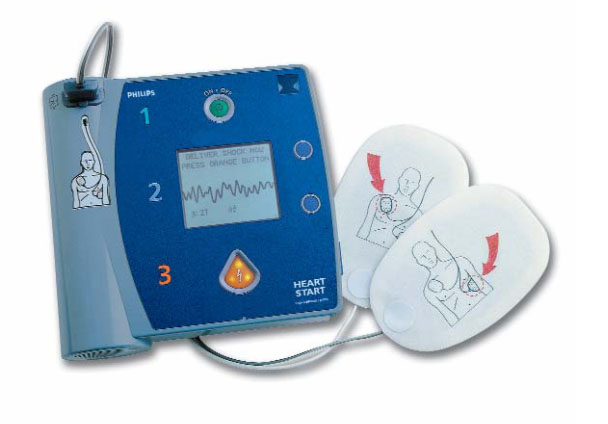You are the last and best hope of a victim who has experienced sudden cardiac arrest. Sound overwhelming? It can be, but only if you are unprepared and unsure of your next steps.
Many businesses and public establishments, where you are most likely to meet a victim of sudden cardiac arrest in public, have access to defibrillators, such as the Phillips AED, for example. While these defibrillators come with instructions, being new to the machines and unaware of exactly how to use them in the case of an emergency can be the difference between life and death. For this reason, it is crucial that you are familiar with how to use a defibrillator in case of an emergency.

Here are the need-to-know steps on how to properly put a defibrillator to use if you ever encounter a sudden cardiac arrest victim.
1. Turn on the machine.
While this may seem obvious, many people become so flustered that they forget to do this. If you are in a place of business that has this type of machine, plan on it being turned off to preserve precious battery life.
2. Remove the victim’s shirt and jewelry.
Before applying any pads or shocks to the patient, the clothing will need to be removed so that you can deal directly with the victim’s skin. Also, remove jewelry so that there are no negative interactions.
3. Apply the pads to the victim’s chest.
Follow the instructions on the machine to find out how exactly the pads should be placed on the victim’s body.
4. End any CPR efforts.
Once the heart has stopped beating, as it does in sudden cardiac arrest, CPR will not keep the patient alive. Therefore, before proceeding with further treatment, CPR must stop.
5. Deliver a shock.
This step relies on the machine to determine whether one is needed or not. If the machine determines that the heart is no longer beating, you will need to administer a shock to get the heart pumping again.
6. Check the pulse and breathing of the victim.
If the pulse has resumed, but the victim is still not breathing, resume CPR. If the pulse still has not resumed, give another shock once the machine has determined it is appropriate.
Sudden cardiac arrest is a fatal disease, and without treating the victim quickly, the potential for death is very high. Use the steps above and a defibrillator to save a life if you ever see this occur.
Amanda highly enjoys writing about health. If you’d like more information regarding Phillips AED, please visit http://www.aedbrands.com/

